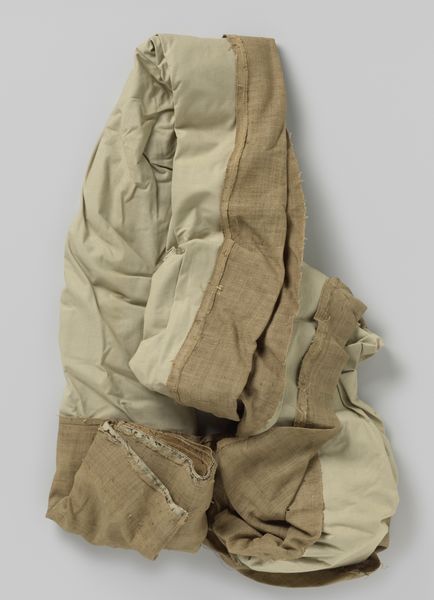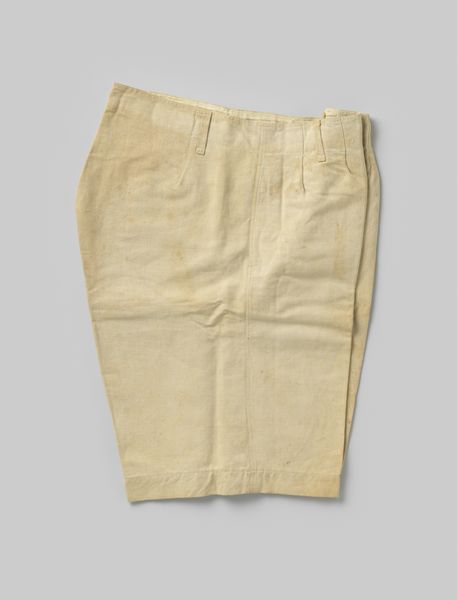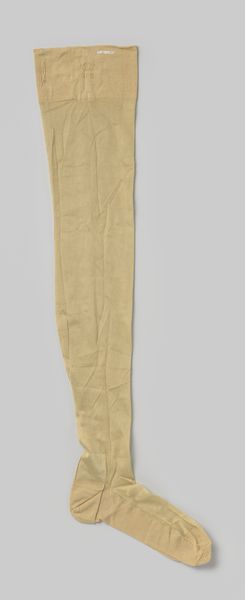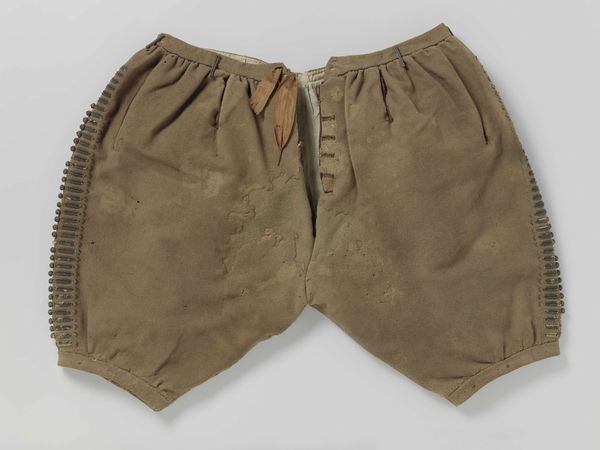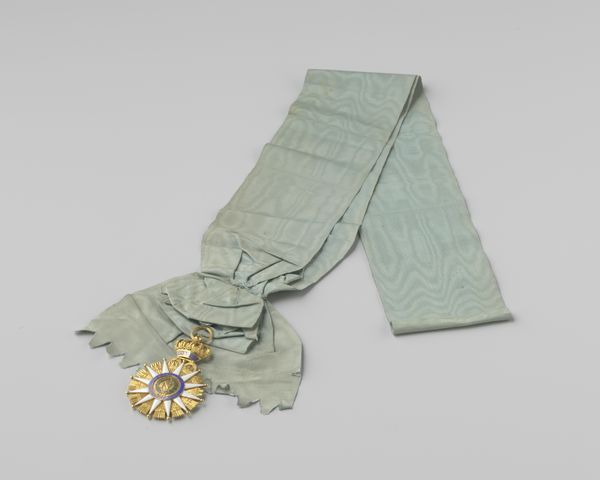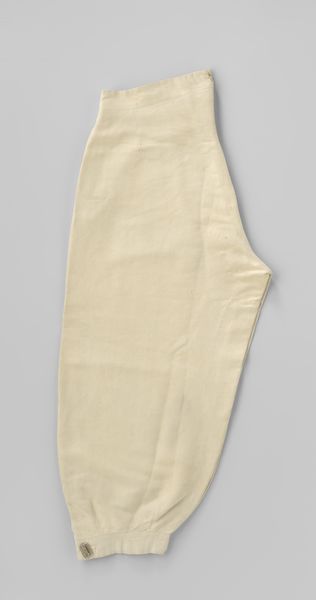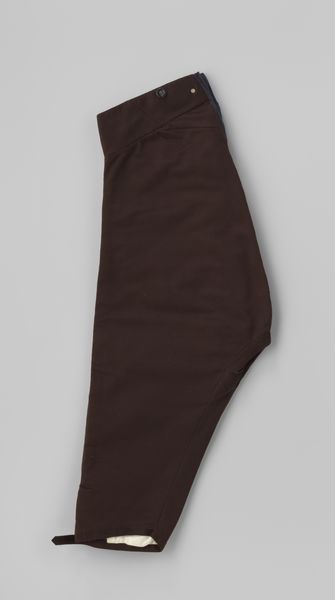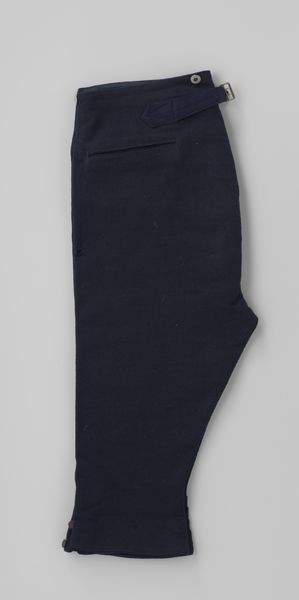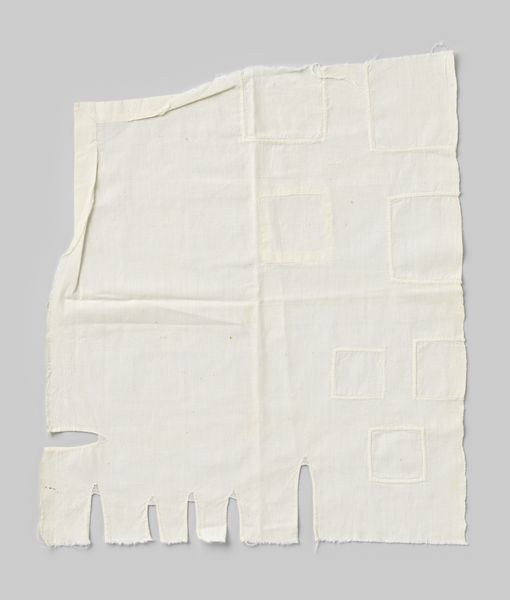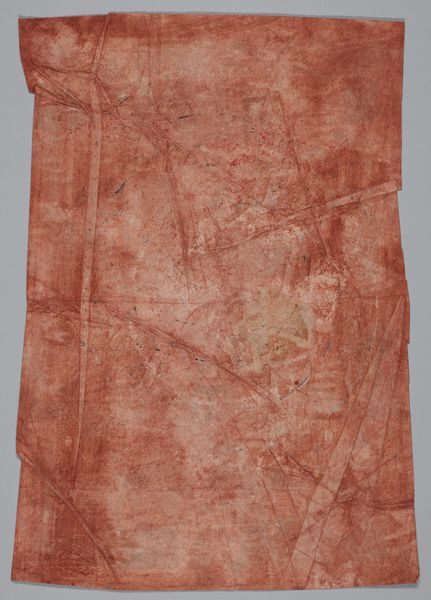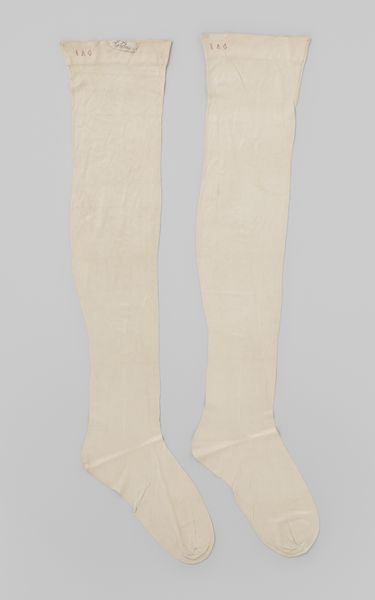
Japon van grijze crêpe met enveloppe waarin 5 losse fragmenten van de stof c. 1930s
0:00
0:00
mixed-media, fibre-art, textile
#
mixed-media
#
fibre-art
#
textile
Copyright: Rijks Museum: Open Domain
Editor: This artwork, titled "Japon van grijze crêpe met enveloppe waarin 5 losse fragmenten van de stof," which translates to "Japan of grey crepe with envelope containing 5 loose fragments of fabric," dates to around the 1930s and is attributed to mejuffrouw Haag. It seems to be made from mixed media, including textile. What strikes me most is the arrangement—it feels like fragmented memories, almost tactile, due to the material. What do you see in this piece? Curator: What I find compelling here is the way fabric, especially fragments, carries within it a history of touch, of use. Consider how we often keep scraps of fabric from loved ones, or significant events. This work uses textile to evoke powerful connections, echoing perhaps the comfort and fragility we associate with textiles. This ‘grey crêpe’ evokes for me a certain muted, quiet elegance of the 1930s, hinting at the aesthetic values and material culture of that era. How does the title "Japan" resonate for you, given the material? Editor: It's interesting you pick up on that tactile connection. "Japan" in the title does make me think of the export of textiles and Japonisme popular during that time, or perhaps the use of crepe, a fabric with strong ties to Japanese clothing traditions? Curator: Precisely. It prompts questions about cultural exchange and appropriation. These aren't pristine, mass-produced fabrics; they are remnants. What emotional or psychological resonance does 'remnant' suggest to you? Consider clothing and garments -- how they conceal us, reveal us, and protect us. Editor: The idea of remnants makes me consider mementos of clothing, like scraps that are left over from clothing; they feel quite poignant and precious in that sense, loaded with history. The idea of Japan also adds an additional layer related to how that exchange occurred in the context of the era it was created. Curator: Exactly. It underscores how a seemingly simple collection of fabric scraps can be dense with meaning, weaving together personal history, cultural memory, and artistic expression. There is power in symbols, after all! Editor: It really is amazing to think about the potential history woven into what I first perceived as just scraps of fabric. The artist, it seems, truly transforms mere textiles into cultural carriers, making me re-evaluate the value in every day mundane objects!
Comments
No comments
Be the first to comment and join the conversation on the ultimate creative platform.
